There is no prettier sight in autumn than a European spindle, or Euonymus europaeus, with every branch adorned with bright, colourful, fleshy fruits, and leaves with the reddish tints of autumn colour. The European spindle must be one of our most beautiful, ornamental native shrubs or small trees in the British landscape. It’s supposedly lucky, but not if you eat it, as every part of the plant is poisonous. Remember to wear gloves as a form of protection when handling any part of these plants and wash your hands well before eating or having a drink.

How to grow euonymous
When to prune euonymous
Spindles require little if any pruning, apart from maintaining their size and shape, which should be carried out during late winter to early spring, but they are free-flowering regardless of any pruning.
Where to plant euonymous
Deciduous euonymous are relatively low maintenance and aren’t really fussy about where they grow in the garden. They will be happy in most soil types, ranging from acid to alkaline providing they are fertile and free-draining, but they dislike waterlogging. Most spindles will tolerate drier soils once established in their final position in the garden.
In their natural habitat they are usually found growing on the edges of woodlands where they are an indicator of ancient woodland. They also grow naturally in mixed hedgerows with other shrubs, such as hawthorn, dogwood and roses, so are quite happy growing in an exposed or sheltered position in full sun or partial shade in association with many other woody and herbaceous plants, giving you lots of options for a suitable planting position. They work well in a formal shrub border, or as a background shrub, and look especially good as an individual specimen plant in an arboretum setting, where they can show off their fruit and leaf colour to their best in the autumn.
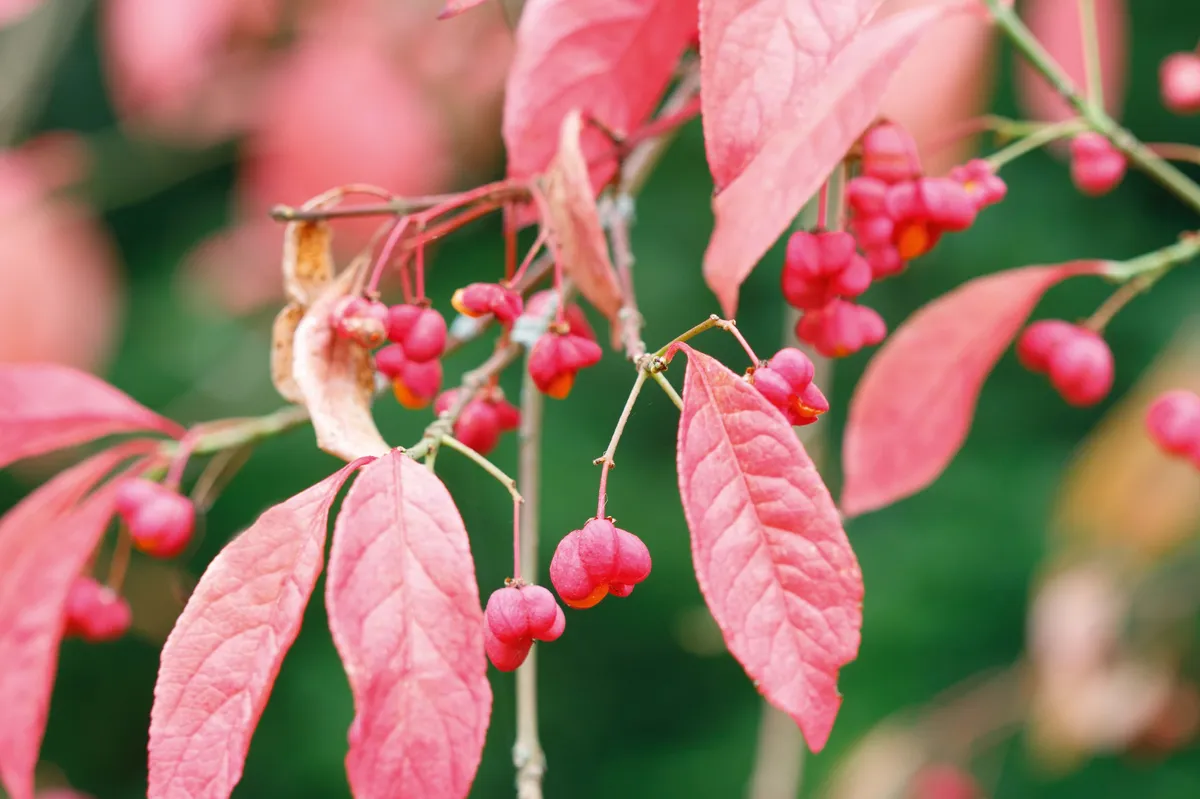
How to plant euonymous
Before planting in autumn or spring, add some well-rotted compost to the cultivated soil followed by a good watering and mulching with a good fibrous compost or composted wood chips after planting. Most of the popular cultivars are readily available and will have been propagated vegetatively by semi-ripe cuttings taken in late summer. However, most of the deciduous spindle species can be easily grown from seed collected in the autumn. The seed must be cleaned well, by removing the fleshy orange aril, air dried and sown straight away in a well-drained compost to the depth of the seed. The surface can be covered with a fine grit, and the seed pan placed in a rodent-proof area outdoors, where it will experience any winter cold, and germination will take place during the following spring. If the seed is stored for any length of time, it will need some cold stratification in a bag of moist sand in a fridge for eight to 12 weeks before sowing to mimic a cold winter. If not, you will need to be patient and wait a second year for germination.
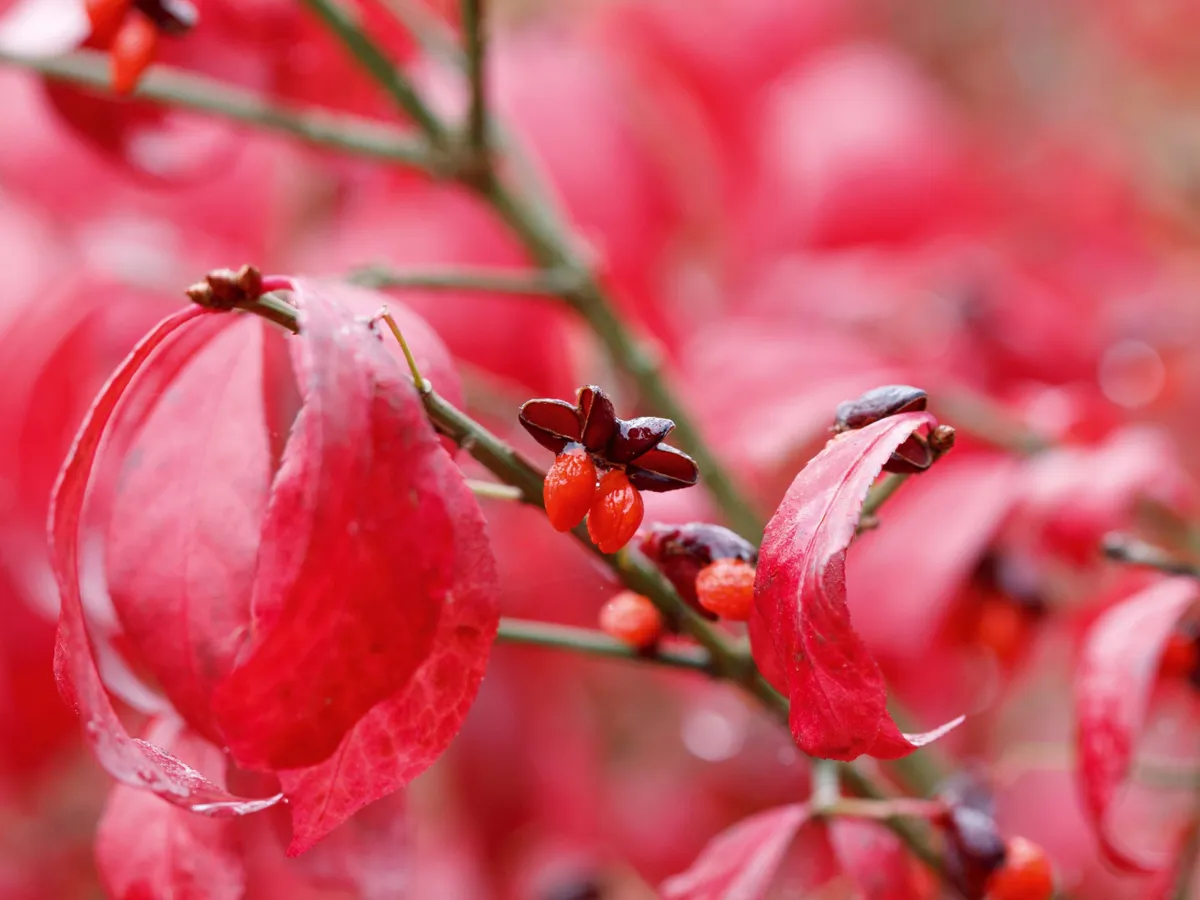
Euonymous pests and diseases
Most spindles are generally pest and disease free, but some will occasionally suffer from the usual suspects that trouble other shrubs such as powdery mildew and a fungal leaf spot, which can be easily controlled by raking up and disposing of fallen leaves. The young, fleshy growth of spindles can also be attractive to scale insects and aphids, which can cause leaf curl and wilt.
When does euonymus flower?
Nearly all the deciduous spindles have flowers, which appear in late spring or early summer, that are rather inconspicuous and certainly are not one of the plant’s main ornamental features. These flowers are a flat-topped inflorescence (cyme) growing from where the current season’s growth joins the previous season’s and are partially obscured by the green leaves. Each floret has four petals, and these vary in colour from yellow-green to white with the exception of Euonymus atropurpureus, which has dark-purple flowers and Euonymus cornutus, which has pale, purple-tinted flowers. These flowers mature through the summer into the autumn, giving rise to the spectacular, colourful fruits that persist well into the winter. It’s these fruits that are the highly ornamental feature for which this genus is most noted.
How tall does euonymous grow?
Varies from around 1.5 to 4m tall – sometimes reaching 8m in the right conditions and a spread of 1.5 to 4m.
The best euonymus to grow
Euonymus oxyphyllus ‘Angyo Elegant’
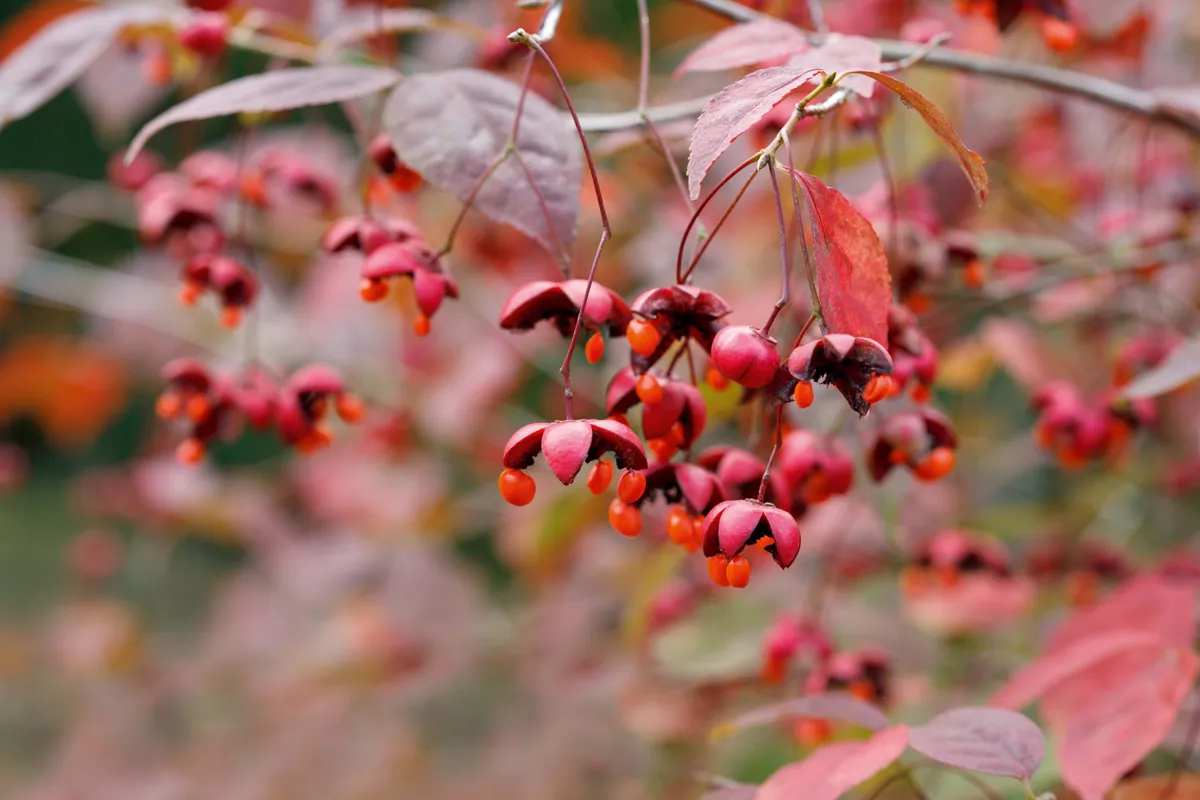
The Korean spindle is a large, charming shrub with branches bearing corky wings. The green summer foliage is dotted with cream speckles turning a dark red in autumn with dark-red spherical fruits on long stalks showing off the orange seeds. 1.5-2.5m x 1.5-2.5m. RHS H6†.
Euonymus hamiltonianus ‘Red Elf’
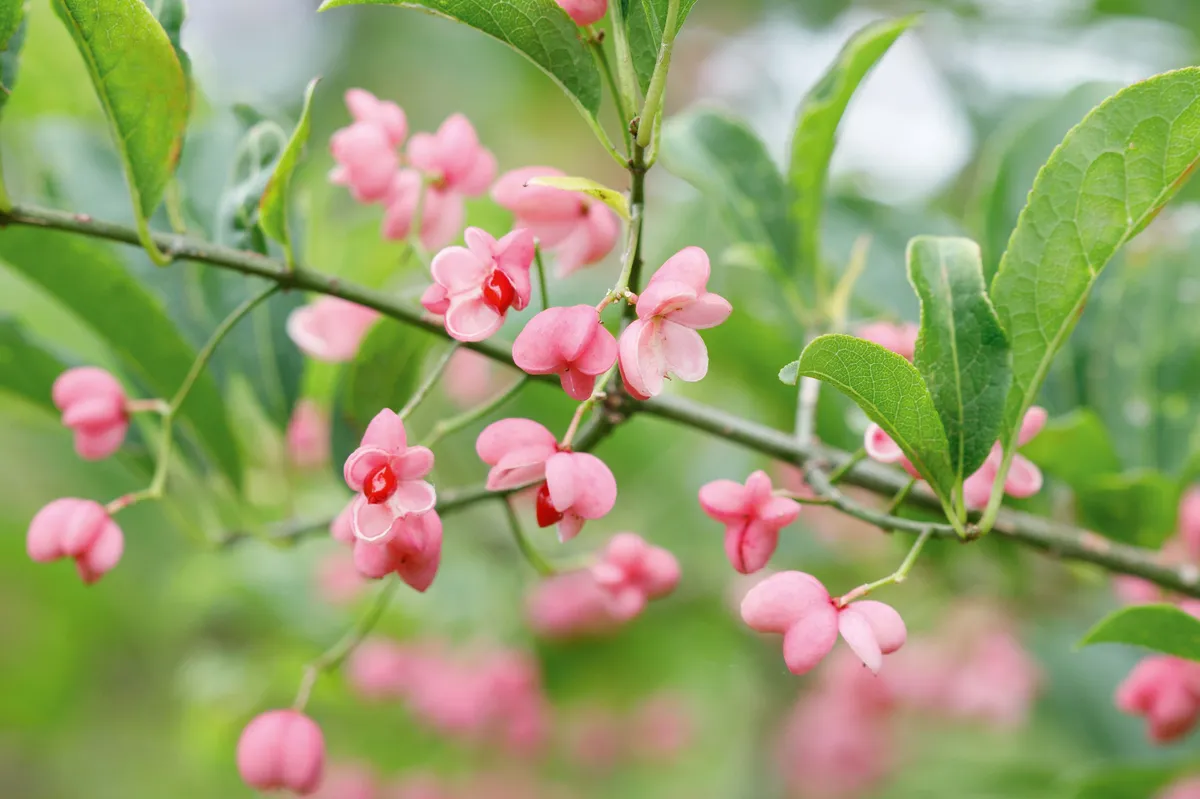
One of the more common Asian spindles, this smaller-growing cultivar bears dark-pink fruits, which open to show off the red-orange seeds. Contrary to its name, it can make a fair-sized shrub. 2.5-3m x 1.5-2.5m. RHS H6.
Euonymus europaeus ‘Brilliant’

The common spindle is a large shrub with a narrow habit and leaves that turn pinky-red in autumn. The small, white flowers develop into vivid-red fruits that open to display bright-orange seeds. 2.5m x 1.5m. RHS H6, USDA 4a-7b.
Euonymus hamiltonianus ‘Miss Pinkie’
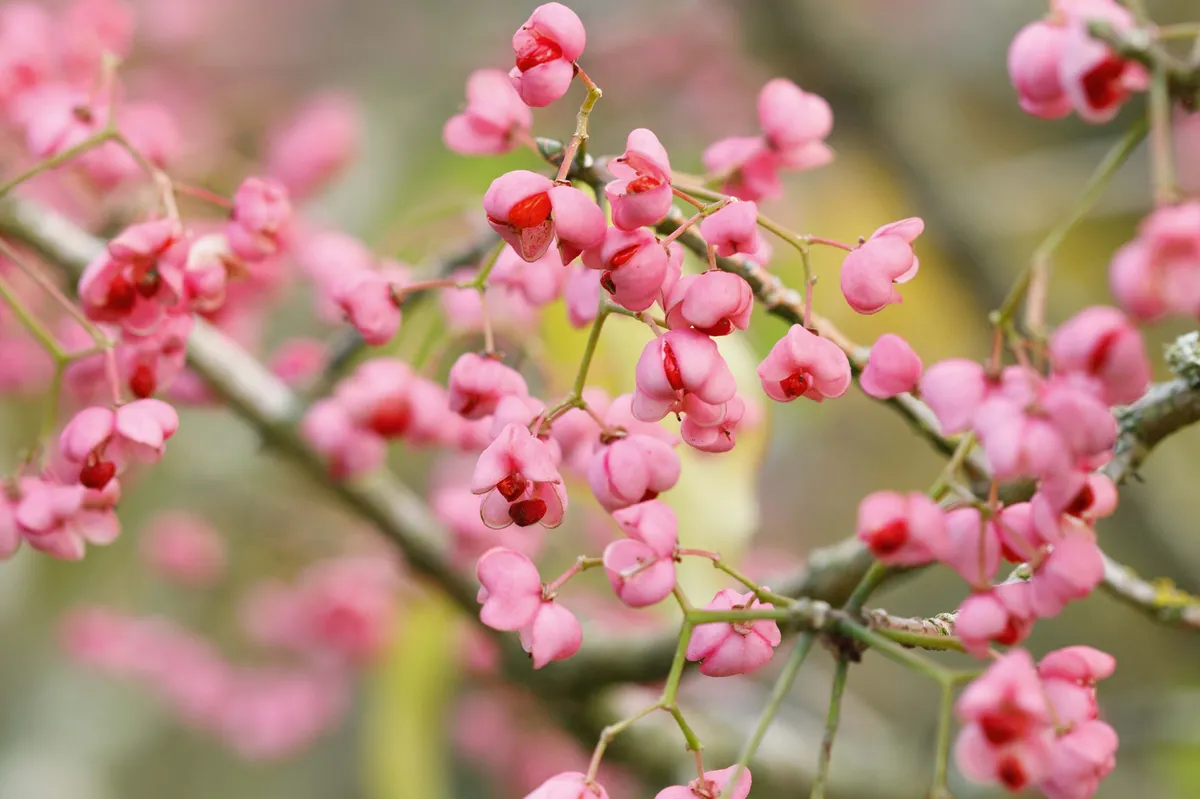
A compact shrub, suitable for any size of garden. It has attractive, winged stems, pale-yellow leaves in autumn and a profusion of sugar-pink, four-lobed fruits that split open to expose the orange-red seeds.
1.5m x 1.5m. RHS H6.
Euonymus europaeus ‘Thornhayes’
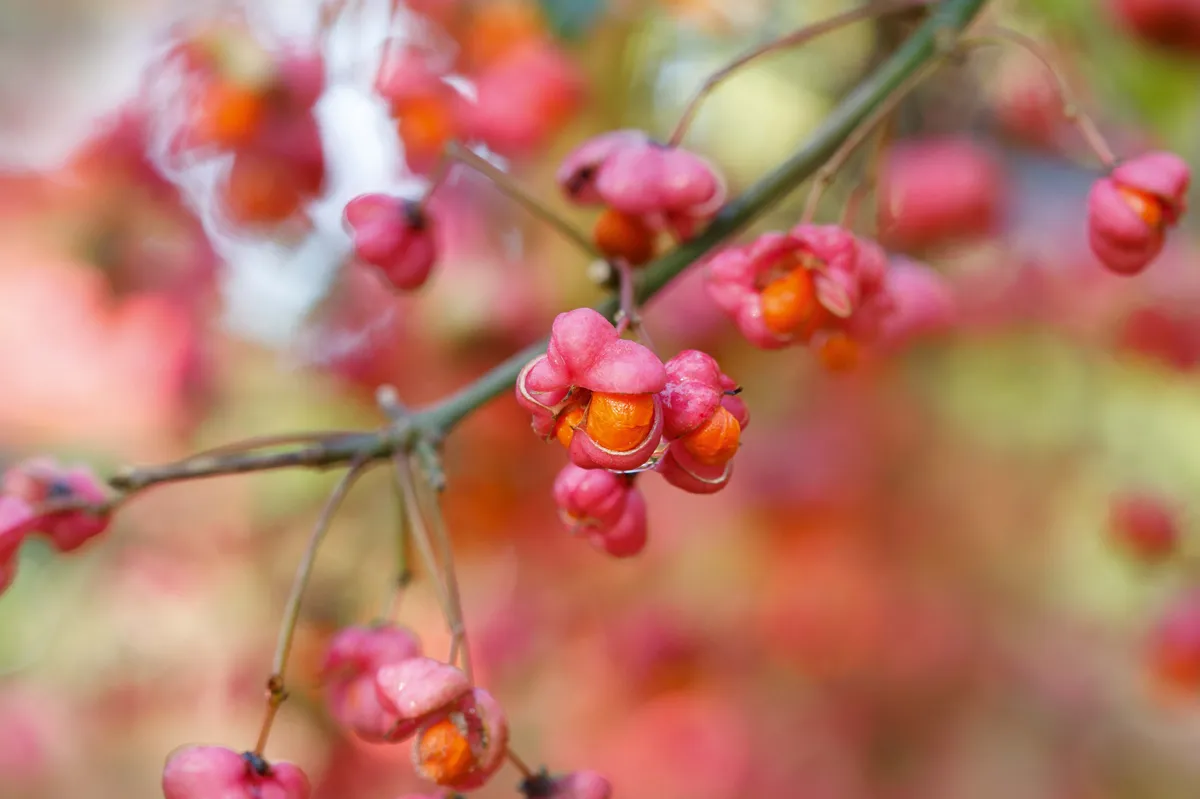
A large shrub noted for its white flowers, which are full of nectar, making it a good plant for pollinating insects. These are followed by bright-pink, four-lobed fruits revealing the orange seed persisting into winter. 2.5-4m x 2.5-4m. AGM*. RHS H6, USDA 4a-7b.
Euonymus cornutus var. quinquecornutus
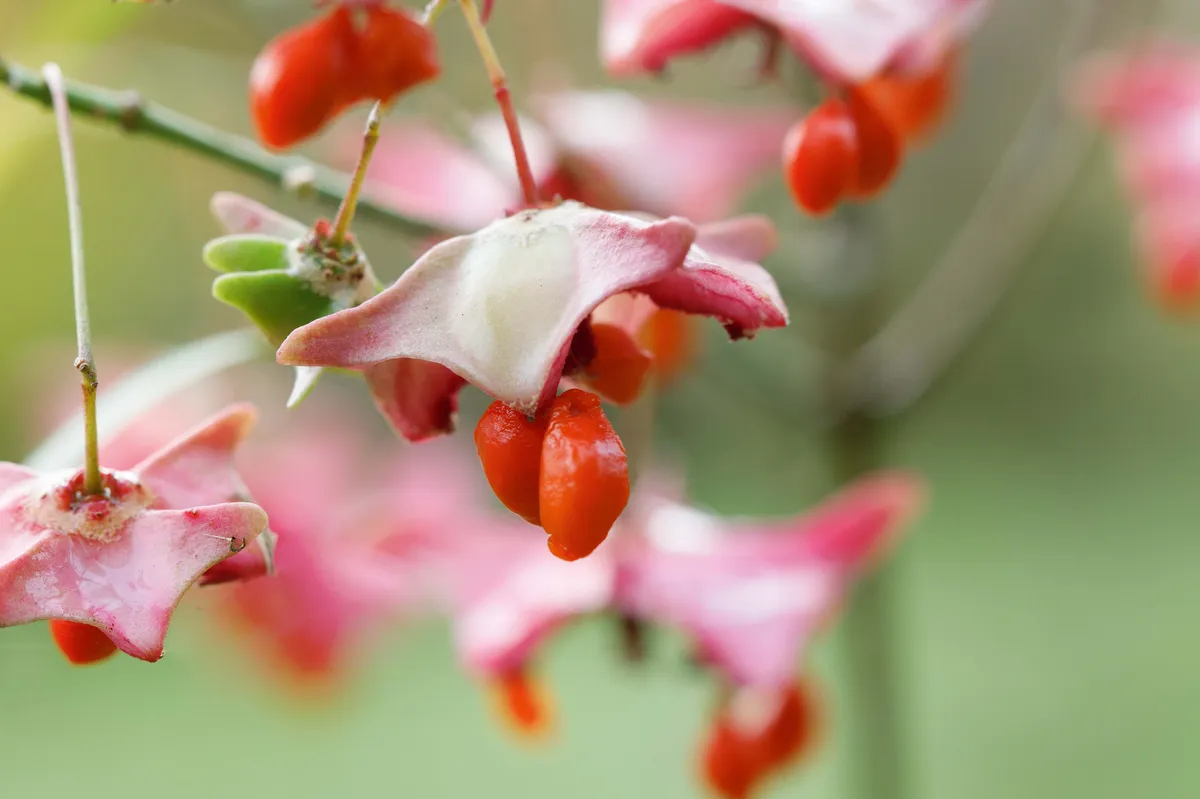
This rare Chinese shrub was introduced to cultivation by EH Wilson in 1908. The delicate purple flowers turn into bright-pink fruits, with five or six horns, that split open to reveal the orange seeds. 2m x 2m. AGM. RHS H6.
Euonymus alatus ‘Compactus’
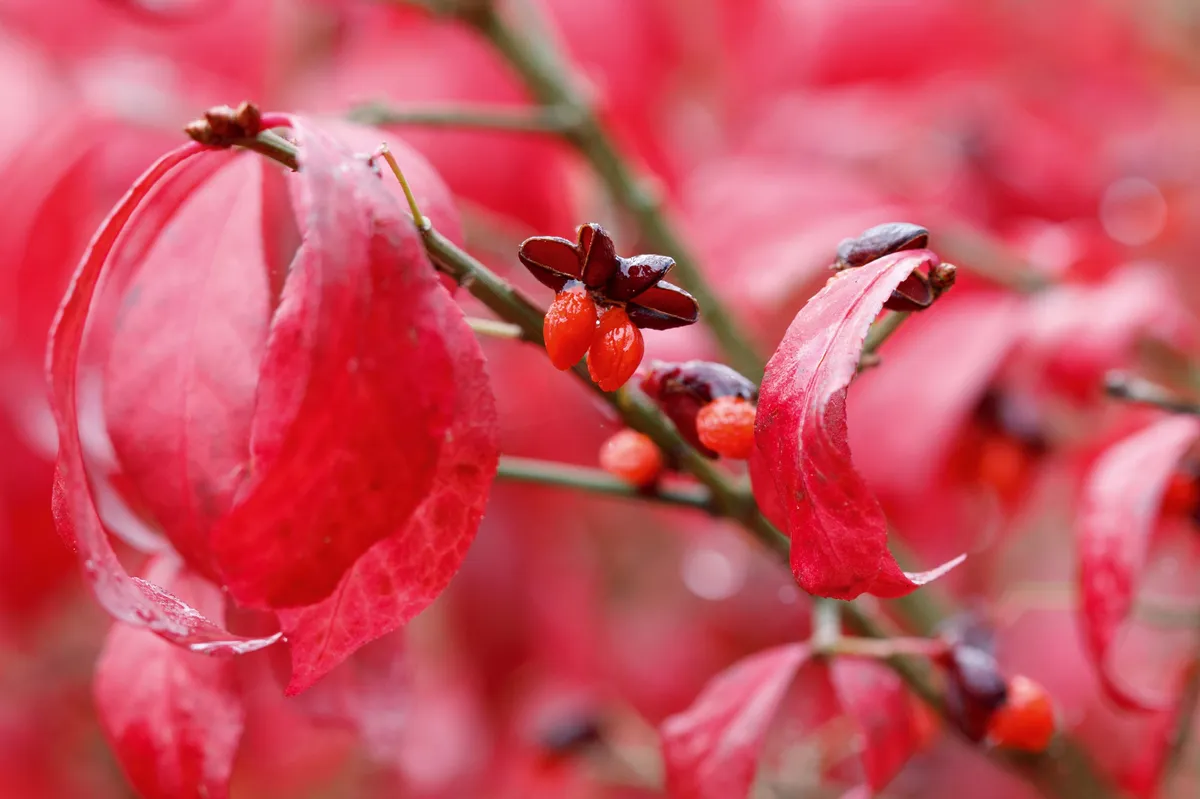
This is a compact cultivar of a beautiful species with corky ridges along the stems, brilliant, fiery-red autumn colour and red-purple fruits exposing the orange seeds. 50cm-1m x 1-1.5m. AGM. RHS H6, USDA 4a-8b.
Euonymus hamiltonianus ‘Rising Sun’
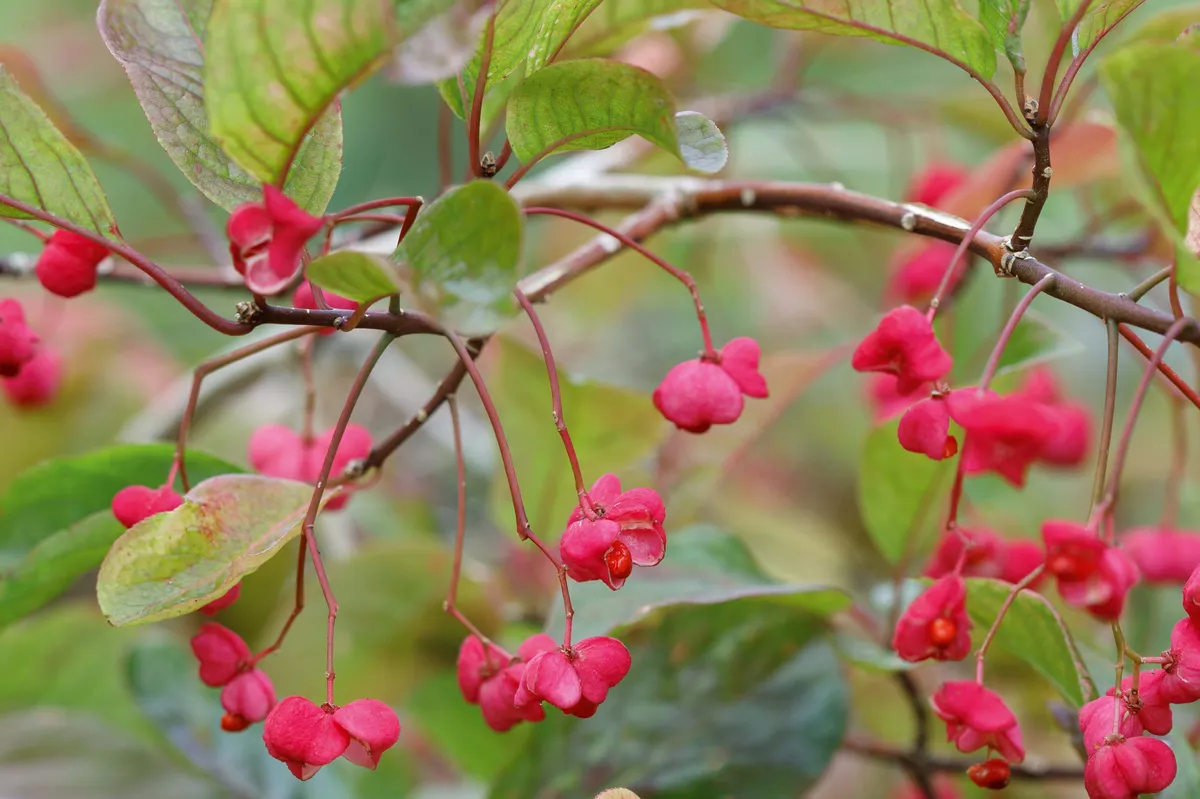
The leaves of this tree-like spindle are green with a hint of red in summer, turning pink and red in autumn. Fruits, which are a reddish-pink, split open to show off the red seeds. 2.5-3m x 2.5-3m. RHS H6.
Euonymus alatus ‘Bladerunner’
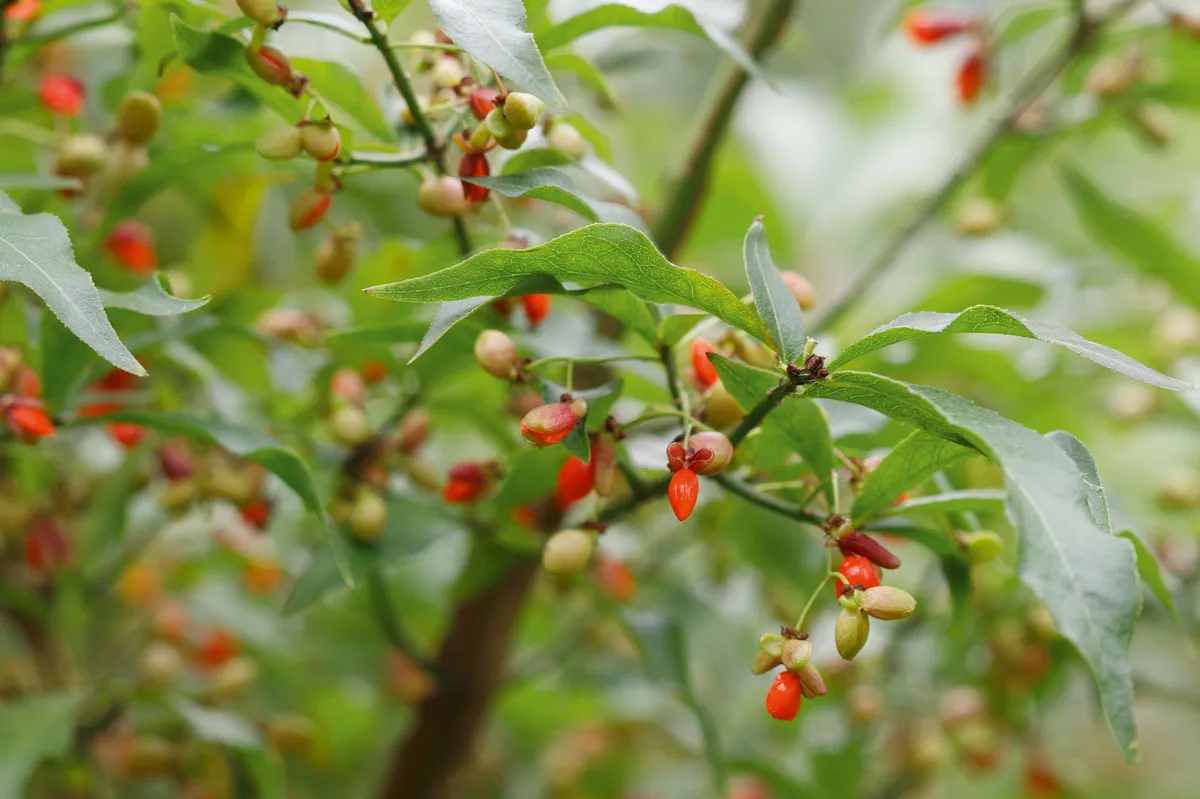
The broad, corky wings on mature branches provide the winter showpiece. In autumn, crimson leaves fall to reveal red-purple fruits with orange seeds. 1.5-2.5m x 1.5-2.5m. RHS H6, USDA 4a-8b.
Euonymus hamiltonianus ‘Popcorn’
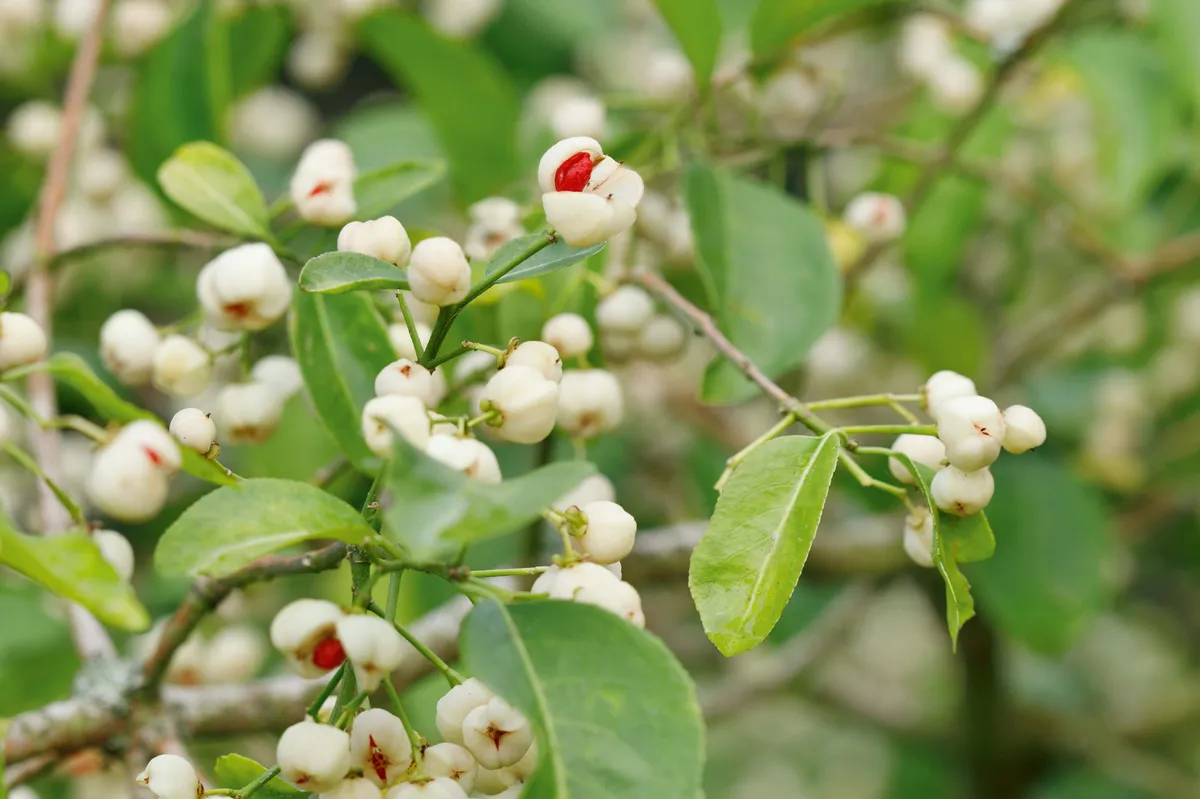
Living up to its name, this spectacular shrub resembles a bush covered in popcorn when the white fruits split to reveal the orange-red seeds against the yellow leaves in autumn. 2.5-3m x 2.5-3m. RHS H6.
Euonymus europaeus ‘Red Cascade’
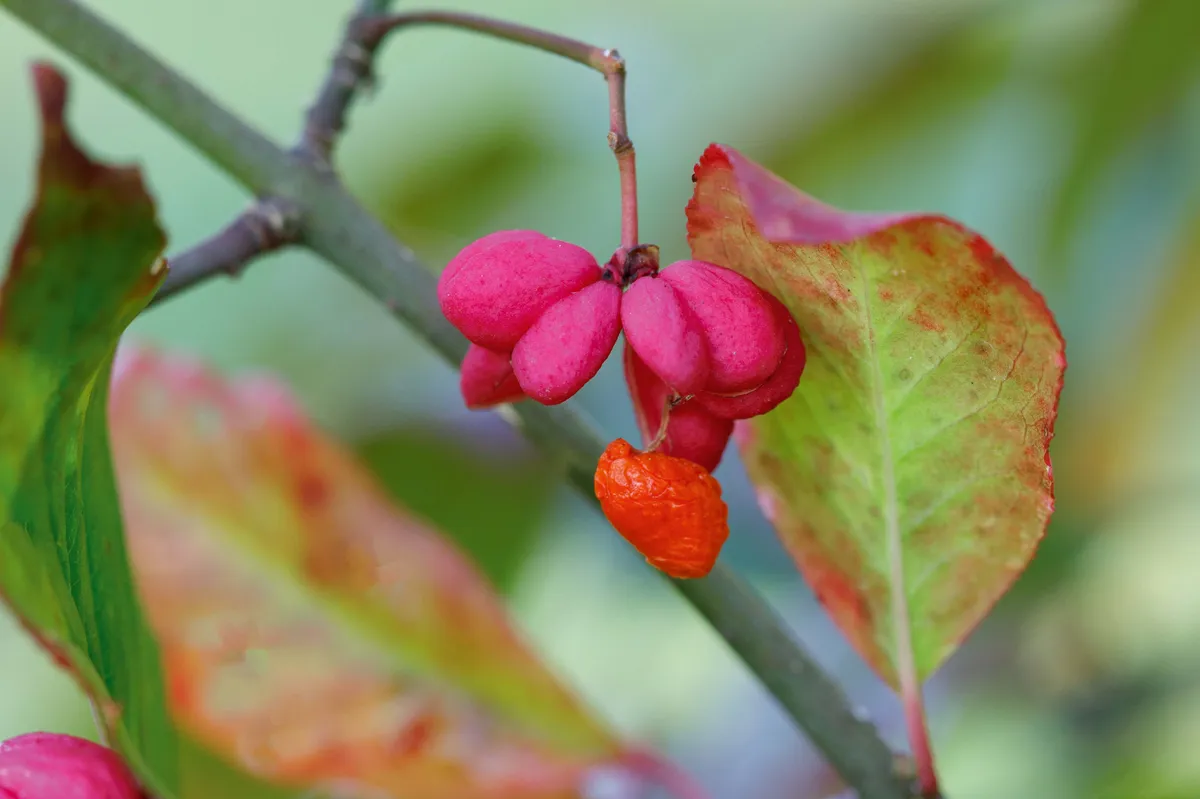
As its name suggests, this popular cultivar produces a cascade of large, bright rose-pink winged fruits long after the bright-scarlet leaves have fallen in autumn. 3m x 2.5m. AGM. RHS H6, USDA 4a-7b.
Euonymus planipes ‘Sancho’
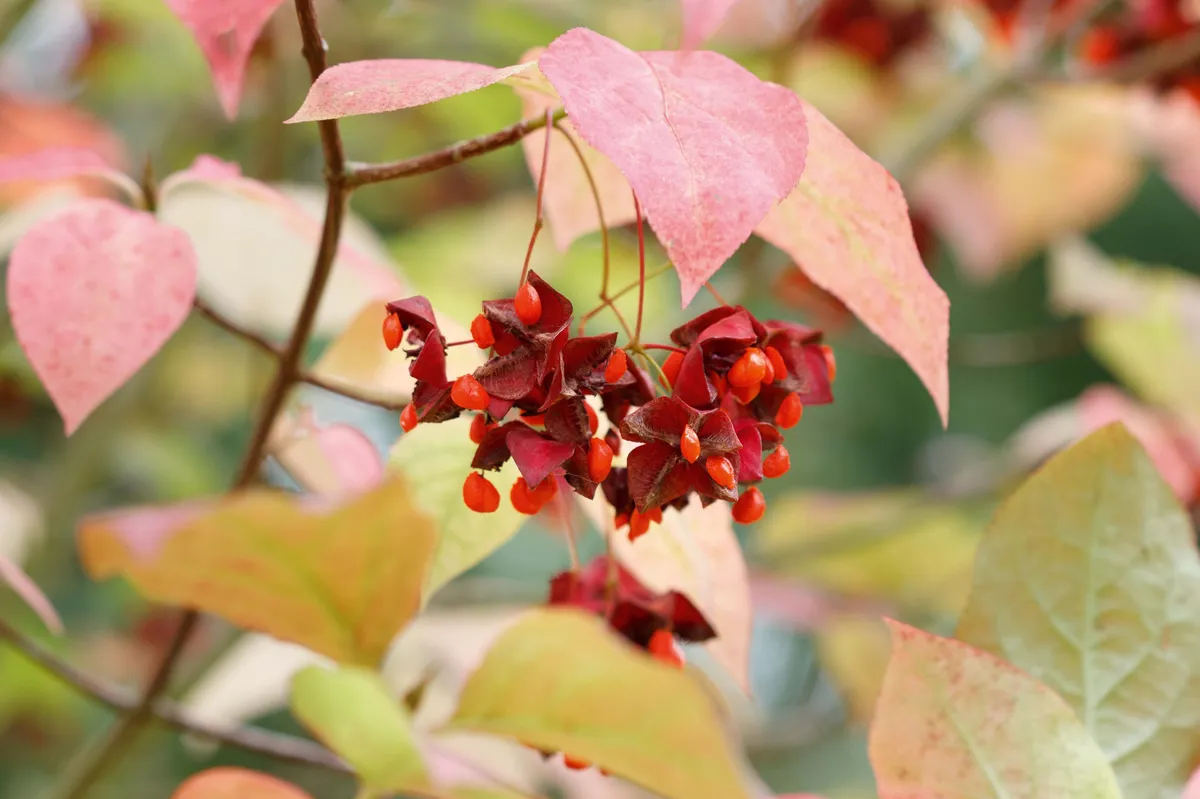
This Dutch selection of the Asian flat-stalked spindle produces a proliferation of green flowers in late spring, followed by lots of large, scarlet fruits with dangling orange seed. Excellent autumn colour. 1.5-2.5m x 1.5-2.5m. AGM. RHS H6.
Euonymus hamiltonianus subsp. sieboldianus ‘Coral Charm’
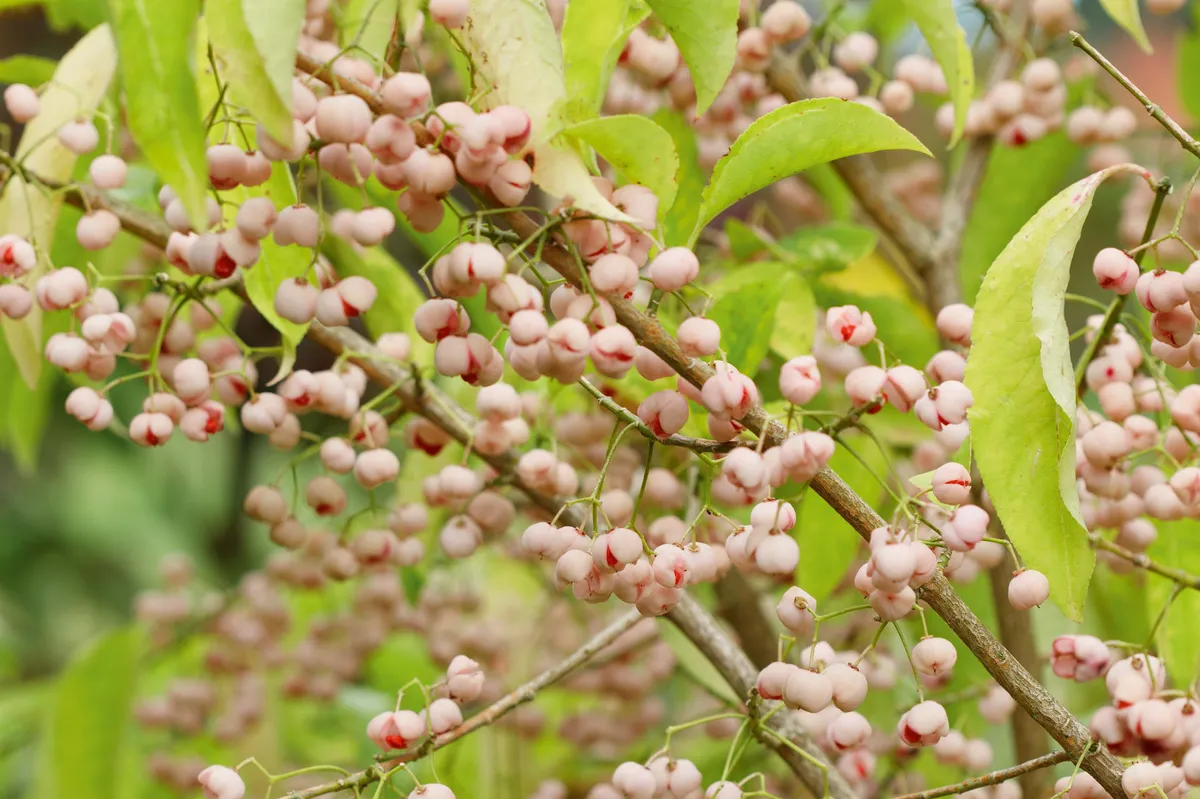
With a spreading habit and tree-like form, this cultivar produces a wealth of round, coral-pink fruits, each with an orange-red seed. Another bonus is the lemon-yellow autumn foliage. 3m x 2.5m.
Where to see and buy euonymus
• Bluebell Arboretum & Nursery Annwell Lane, Smisby, Ashby de la Zouch, Leicestershire LE65 2TA. Tel 01530 413700, bluebellnursery.com
• Burncoose Nurseries Gwennap, Redruth, Cornwall TR16 6BJ. Tel 01209 860316, burncoose.co.uk
• Frank P Matthews Berrington Court, Tenbury Wells, Worcestershire WR15 8TH. Tel 01584 812800, frankpmatthews.com
• Junker’s Nursery Higher Cobhay, Milverton, Somerset TA4 1NJ. Tel 01823 400075, junker.co.uk
• The Place for Plants East Bergholt Place, Suffolk CO7 6UP. Tel 01206 299224, placeforplants.co.uk